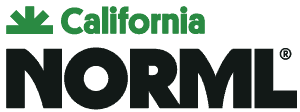Jan 30, 2009 — The newly released biennial Attorney General’s Survey of Student Drug Use in California shows that marijuana use among 7th. 9th and 11th graders remained stable during 2007-8, but reports an “alarming rate” of prescription drug abuse.
“The survey confirms that California’s medical marijuana law has had no adverse impact on youth marijuana use,” comments California NORML coordinator Dale Gieringer. “At the same time, it shows that youth prescription drug use has been seriously underestimated in the past.”
Marijuana use been declining to stable ever since passage of California’s medical marijuana law in 1996. See graph.According to the latest report, “Since 2003, use in the past six months has remained stable at 7% in 7th grade, 20% in 9th and 31% in 11th grade.”
“The most significant but disturbing overall finding of the 12th biennial survey is – because of underassessment of recreational use of prescription and over-the-counter drugs – we have previously underestimated actual levels of youth substance use. New data shows that 37 percent of 9th and 50 percent of 11th graders used either an illicit/illegal drug or a diverted prescription drug to get high at least once in their lifetime. Taking this into consideration, total
lifetime use of alcohol and other drugs (AOD) use is estimated at 52 percent and 69 percent respectively. Including use of cold/cough medicines to get high, lifetime AOD 9th- grade use rises to 60 percent and 11th- grade use to 74 percent.”
Excerpts:
CALIFORNIA STUDENT SURVEY (CSS)
12TH BIENNIAL CALIFORNIA STUDENT SURVEY, 2007-08
Welcome to the 12th biennial California Student Survey (CSS) that was conducted during the 2007-08 school year by the Crime and Violence Prevention Center, California Attorney General’s Office. This statewide biennial research continues the important work, which started in 1985, of collecting substance use data from the students themselves. Participating in the 12th CSS were 13,930 students from 115 public middle and high schools. From the reported data, the preliminary findings indicate three major trends of the 2007-08 CSS:
(1) Prescription drug use by California youth is occurring at an alarming rate.
(2) First-time data collected on the use of over-the-counter drugs indicate many teens are taking them to get “high.”
(3) Heavy users of illicit substances are still a significant group in California, a trend noted as early as the 1999 CSS.
The preliminary 2007-08 findings support a couple of conclusions reached in our 2005 CSS report: Prevention efforts may be “bottoming-out” and further reductions in overall prevalence may be more difficult to achieve; also, there should be specific intervention aimed at youth who are at risk of heavy and problematic substance use.
Marijuana
As shown in Figure 3, among 7th grade students there is relatively little difference between lifetime, six-month and 30-day prevalence of marijuana use (9%, 7% and 7%,
respectively), reflecting that many 12-and 13-year-olds had tried marijuana only recently. Predictably, lifetime use increases dramatically to25% in 9th grade and 42% in 11th, while differences between lifetime and current use rates widen. Current rates, in past 30 days, were 15% in 9th and 24% in 11th, about 60% of lifetime use in both grades. Since
2003, use in the past six months has remained stable at 7% in 7th grade, 20% in 9th and 31% in 11th . (Tables 2.2, 2.6-2.9, & 2.13)
12th biennial California Student Survey’s Report of Highlights
12th biennial California Student Survey’s Compendium of Tables
CSS – Current Substance Use Among California Secondary Students website
